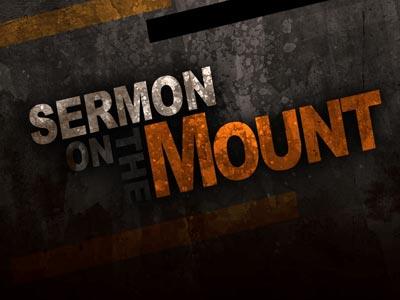-
24.18 What Are You Building? Series
Contributed by Denn Guptill on Nov 28, 2017 (message contributor)
Summary: Jesus finishes the Sermon on the Mount by leaving his listeners with a responsibility for what they had heard.
That pretty well tied up the morning. Jesus has been teaching his disciples about a whole range of subjects involving the kingdom of God and now he ties it up with a pretty bow and hands it to those who were listening and basically tells them, “You are responsible for what you are going to do with what you have heard.”
Christ knew the reality of life, he realized that as persuasive as he might be that everyone in his audience would have the opportunity to respond to his message in one of two ways. They would either accept it or they would reject it. In other words the people who listened to Jesus Christ the Son of God preach had the same option that you have today, either accept what you hear or reject it, there is no middle ground.
It all started in Matthew 5:1-2 One day as he saw the crowds gathering, Jesus went up on the mountainside and sat down. His disciples gathered around him, and he began to teach them. And for the next one hundred and five verses Christ shakes his disciples’ preconceptions of religion to the very roots. Everything they had been taught, everything they had been led to believe, everything they had ever seen was turned inside out.
Not content to have his disciples think that his was an easy road to walk he spoke of problems, and persecutions, trouble and tribulations. If Christ was preaching today we would say that he was controversial.
And so before the day was half over Christ brought people to the place that they had to completely re-examine their ideas of happiness and success. Where they had to review what they believed and why they believed it. And in so doing he destroyed many of their concepts of the law, murder, adultery, divorce, oath taking, service, love, giving, prayer, fasting, money, holiness, worry, and judging. What Christ did that morning on the side of a hill overlooking the Sea of Galilee we have spent the past 18 weeks looking at.
And at the end of chapter seven he has the nerve to tell them that these aren’t options, but instead they are to be standard equipment for the believer. The last verse of chapter seven explains why the people were compelled to listen to him, Matthew 7:29 for he taught with real authority—quite unlike their teachers of religious law. He knew what he was talking about. From time to time I have been able to teach as one who had authority. While I was in High School I worked part time selling suits, and I spoke with authority on that subject.
Reminds me of the story of the man who had stomach pains, went to doctors and specialists, had x-rays and ultra sounds but they couldn’t come up with a reason for his pain. Well he figured that he was going to die, so he decided that he’d go on a trip, and he went to a clothing store to buy a new wardrobe, the tailor looked at him and said you look like you’d wear a 42 jacket, 16 shirt, 33 sleeve, and a 32 inseam. A 7 1/2 hat 9 ee shoe and 36 underwear, ah hah you’re wrong I only wear size 34 underwear, “Oh no sir if you wore size thirty four underwear you’d always have pains in your stomach.” Now there was a man who spoke with authority.
When I preach I try to preach with authority. And sometimes when I’ve tried to teach with authority I’ve gotten in over my head. But it was very obvious to the people who had gathered around that Jesus had the authority and knowledge to preach that way.
And so to tie everything together Christ does what he does so well, he tells us a story. And he divides all the listeners of his sermon into two categories, remember. So often in Christian circles today we hear that we are not to be judgmental, people say but you don’t understand, it’s not clear cut, you don’t understand the circumstances.
But Christ drew very clear and decisive lines. As my daddy says, sin is black and white and grey is just a colour of paint.
And Christ tells a story of two men, because one wouldn’t have been enough and three would have been too many. And these two men have several things in common. Just as each one of us have several things in common.
1) They Both Heard the Word. Both of these men had heard what Jesus Christ had to say. The relevance of this message has to be directed firstly at those who have heard the word. And that isn’t difficult. While much of the world has at least a passing acquaintance with the bible and Christianity organizations like Wycliffe continue to translate the bible into different languages and world literature and others continue to spread the word.

 Sermon Central
Sermon Central



